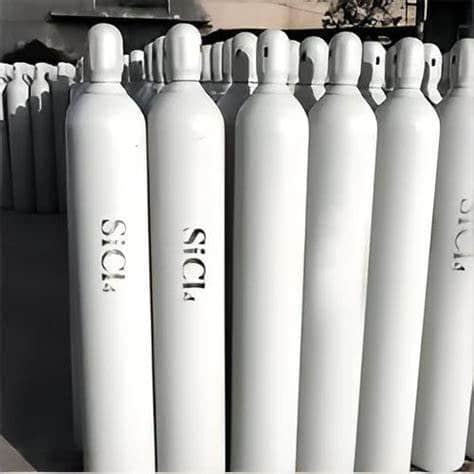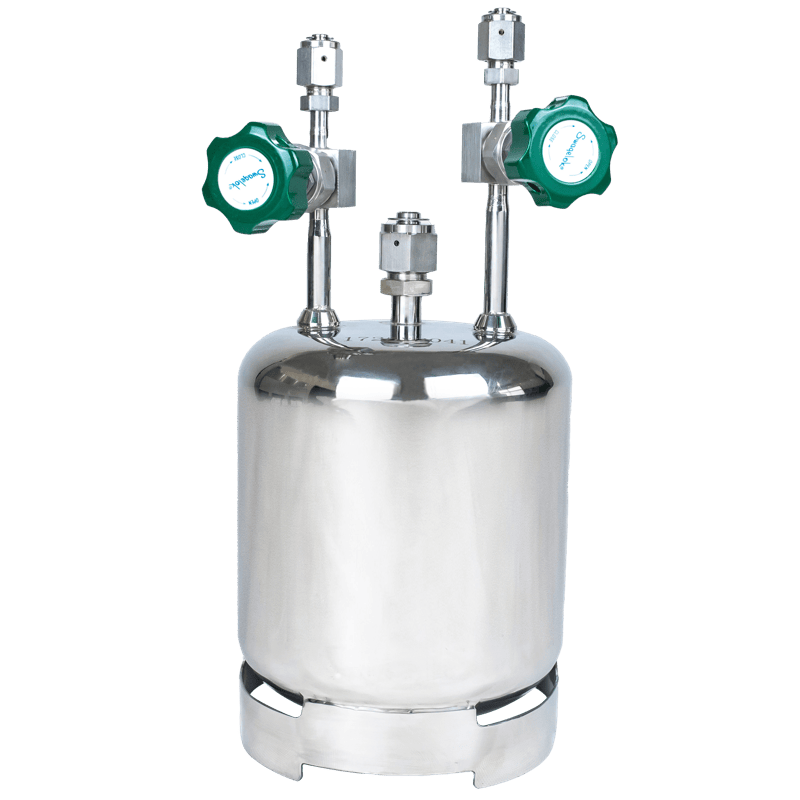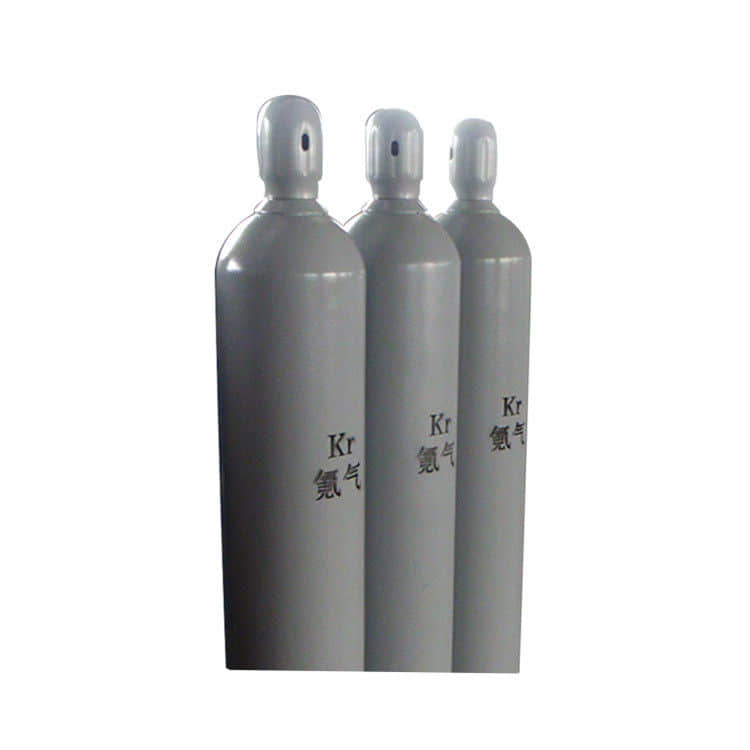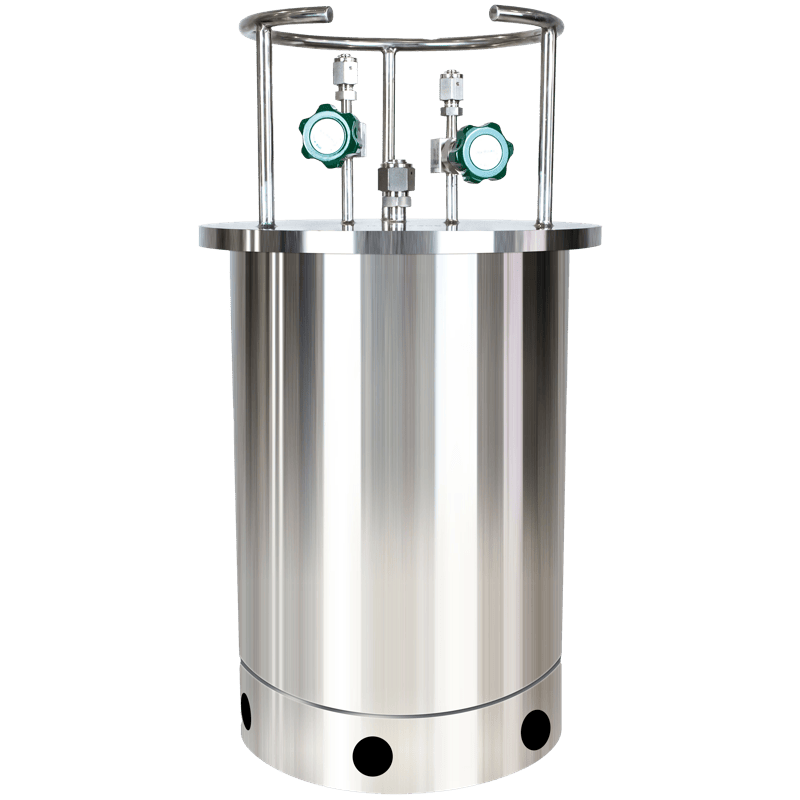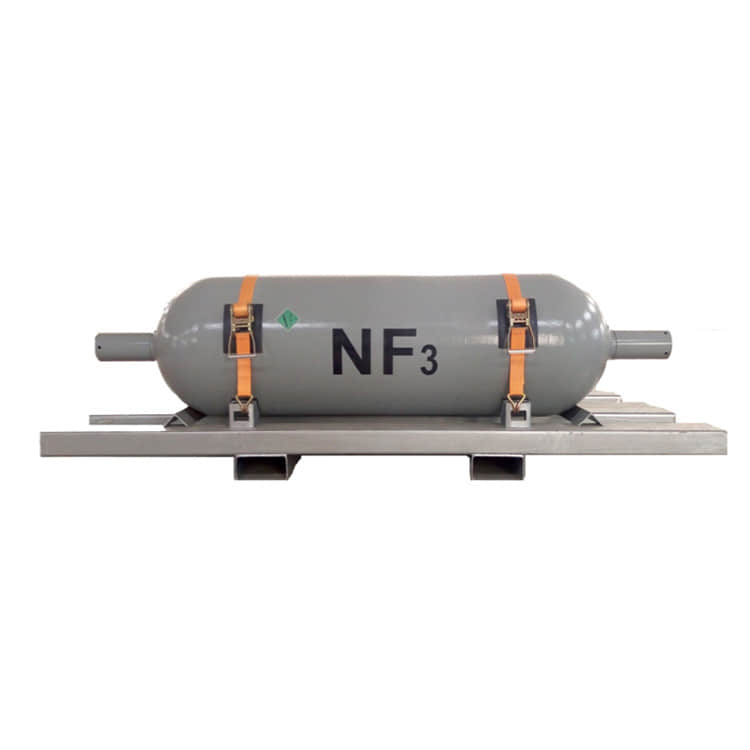Silicon tetrachloride is a colorless, transparent, heavy liquid with a suffocating odor. In its molecular structure, silicon atoms are formed in sp3 hybrid orbitals σ The key is in the shape of a regular tetrahedron. The relative molecular weight or atomic weight of silicon tetrachloride is 169.89, the density is 1.50, the melting point is -70 ℃, and the boiling point is 57.6 ℃. In humid air, silicon tetrachloride is prone to hydrolysis, producing silicic acid and hydrogen chloride, while also producing white smoke. It is corrosive to the skin and is an acidic corrosive substance. Silicon tetrachloride is mainly used in the manufacturing of silicates, organic silicon monomers, organic silicone oil, high-temperature insulation materials, silicone resin, and silicone rubber. It can also be used as a smoke screen agent. In industry, silicon tetrachloride is usually obtained by reacting ferrosilicon with chlorine gas at temperatures above 200 ℃ and then distillation. Electronic grade silicon tetrachloride is a high-end electronic chemical used in semiconductors, mainly used in thin film deposition and etching processes. With the advancement of semiconductor manufacturing process, electronic grade silicon tetrachloride is used in logic chips and memory chips. In addition, high purity silicon tetrachloride can also be used to produce ethyl orthosilicate (TEOS), high purity ethyl silicate is the main raw material of aerogel. Electronic grade ethyl orthosilicate is mainly used in the chemical vapor deposition (CVD) film process of integrated circuit manufacturing.
CAS 10026-04-7
Density 1.5 ± 0.1 g/cm3
Boiling point 57.6 ± 9.0 ° C at 760 mmHg
Melting point -70 ° C (lit.)
Molecular formula Cl4Si
Molecular weight 169.898
Flash point 57.6 ° C
Accurate quality 167.852341
LogP 5.20
Colorless or light yellow smoky liquid in appearance
Steam density 5.86 (vs air)
Steam pressure 229.7 ± 0.1 mmHg at 25 ° C
Refractive index 1.462
Boiling point 57.6 ± 9.0 ° C at 760 mmHg
Melting point -70 ° C (lit.)
Molecular formula Cl4Si
Molecular weight 169.898
Flash point 57.6 ° C
Accurate quality 167.852341
LogP 5.20
Colorless or light yellow smoky liquid in appearance
Steam density 5.86 (vs air)
Steam pressure 229.7 ± 0.1 mmHg at 25 ° C
Refractive index 1.462
Storage conditions
Storage precautions: Store in a cool, dry, and well ventilated warehouse. Keep away from sparks and heat sources. The temperature of the warehouse shall not exceed 30 ℃, and the relative humidity shall not exceed 75%. The packaging must be sealed and protected from moisture. It should be stored separately from oxidants, alkalis, alcohols, etc., and avoid mixing storage. The storage area should be equipped with emergency response equipment for leaks and suitable storage materials.
Storage precautions: Store in a cool, dry, and well ventilated warehouse. Keep away from sparks and heat sources. The temperature of the warehouse shall not exceed 30 ℃, and the relative humidity shall not exceed 75%. The packaging must be sealed and protected from moisture. It should be stored separately from oxidants, alkalis, alcohols, etc., and avoid mixing storage. The storage area should be equipped with emergency response equipment for leaks and suitable storage materials.
Stability
Avoid light, open flames, and high temperatures. This product emits smoke due to hydrolysis and generation of hydrogen chloride in humid air. Heating in dry air or oxygen to generate silicon oxychloride; When reacting with hydrogen (or other reducing agents), trichlorosilane and other chlorosilanes are generated; Quickly react with amines and ammonia to generate silicon nitride polymers; It can also react with alcohols and phenols to generate silicate esters; React with organometallic compounds such as zinc, mercury, sodium compounds, and Grinner reagents to generate organosilanes. When water is present, it corrodes most metals; When there is no water present, it actually has no effect on steel, iron, ordinary metals, and alloys. Heat is released in warm water and decomposed into silicic acid and hydrogen chloride. When encountering alcohol, it also reacts fiercely. Smoke when exposed to moisture in the air. It is easily hydrolyzed in water and converted into silica gel. It can be mixed with benzene, ether, chloroform, etc. in any ratio. Reacting with alcohols can generate orthosilicate esters, and reacting with Grignard reagents to generate chlorosilane.
Avoid light, open flames, and high temperatures. This product emits smoke due to hydrolysis and generation of hydrogen chloride in humid air. Heating in dry air or oxygen to generate silicon oxychloride; When reacting with hydrogen (or other reducing agents), trichlorosilane and other chlorosilanes are generated; Quickly react with amines and ammonia to generate silicon nitride polymers; It can also react with alcohols and phenols to generate silicate esters; React with organometallic compounds such as zinc, mercury, sodium compounds, and Grinner reagents to generate organosilanes. When water is present, it corrodes most metals; When there is no water present, it actually has no effect on steel, iron, ordinary metals, and alloys. Heat is released in warm water and decomposed into silicic acid and hydrogen chloride. When encountering alcohol, it also reacts fiercely. Smoke when exposed to moisture in the air. It is easily hydrolyzed in water and converted into silica gel. It can be mixed with benzene, ether, chloroform, etc. in any ratio. Reacting with alcohols can generate orthosilicate esters, and reacting with Grignard reagents to generate chlorosilane.

